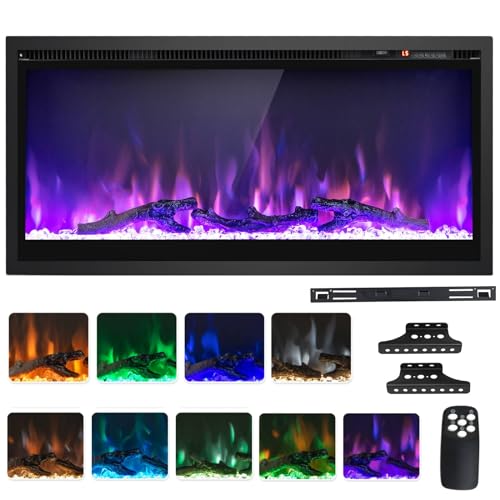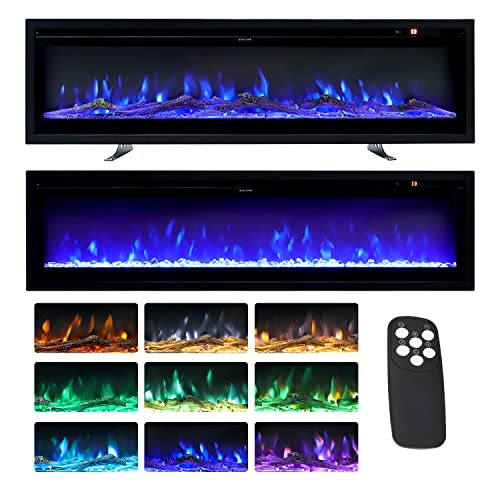Proper Use and Maintenance of a
Wood Heater StoveA wood stove is an ideal place to relax and heat a whole home. Certain stoves emit harmful gasses, such as creosote, which can be dangerous for health and property.

It is essential to take care of these stoves. Some important things to remember are to avoid overheating the stove and not tinkering with the fire, and using dry firewood.
Fuel
Wood stoves burn a range of fuel types which include dry wood and manufactured solid fuels like briquettes and fire logs. These alternative fuels that burn cleanly are less prone to pollution than traditional household coal and wet wood, therefore they are more eco-friendly and healthier to use. However, they do still release gasses and smoke, and require regular maintenance to ensure they are operating at their peak.
Before you purchase or use any fuel, make sure you read the manufacturer's directions and ensure that the fuel is suitable for your stove. Unsuitable fuels can damage your stove or chimney, leading to expensive repairs and invalidating your warranty. It is illegal to use fuel that is not approved particularly in smoke control zones. Look for the "Ready to Burn" logo. This indicates that the fuel is within limits of sulphur and smoke emission limits and is legally purchased for domestic use. The logo is usually displayed along with the price and details about the brand or on the packaging.
The fuels that are suitable for use should be prepared (stored and then split for a few months prior to use) or kiln-dried to reduce the moisture content, which increases heat output and efficiency in combustion. The type of wood selected will also depend on your heating needs. Softwoods such as pine and spruce are an excellent value for money however hardwoods such as oak and beech produce more hot embers and do so over a longer period of time. Fruitwoods like apple and cherry can be used not only to heat the home, but also add a pleasant aroma.
If you have a multi-fuel stove, think about a mixed fuel fire. Combining
cheap wood burner with smokeless briquettes can help to keep the flames going and keep your home warm for a longer period of time. Briquettes can be a great backup and can also prevent a chimney-fire by ensuring that the air is flowing.
A well-maintained stove will create more heat, use less fuel and generate less harmful particles. If you have a gas or oil-fired wood stove, make sure it is fitted by an approved installer (on a competent person scheme like HETAS, APHC, BESCA, Certsure or NAPIT). A regularly serviced appliance is more cost-effective to run and will protect your health and the environment by reducing harmful emissions.
Design
Wood stoves are an excellent source of heat, however their design is crucial to take into consideration. The unwelcome byproducts of combustion, like carbon monoxide and smoke pose a risk to health and environmental impact. Proper operation and a well-designed design are the most important factors in reducing the emission.
Modern
small wood burning stove stoves are designed to be more eco conscious than traditional models. All EPA-certified stoves meet strict emission and energy efficiency regulations that maximize the amount of heat they produce. Look for a metal EPA certification mark on the back of the stove or go through the EPA's latest database to determine the stove is certified. Local hearth products retailers can also be a great source for information on wood stoves, including the size and capacity that is best for your space.
Controlling the flow of air through the stove is a crucial element of EPA emission regulations. The firebox of the stove is enclosed by walls of fireproof materials, and air vents are positioned in the walls to provide controlled airflow. Airflow control is essential to ensure that the combustion is optimal and emissions are minimal.
A majority of modern stoves have a baffle that increases the combustion time of the fire, which reduces emissions of smoke and harmful gases. Certain wood stoves also employ a catalytic converter to reduce NOx emissions. This system is more costly and is used only in high-end wood burning stoves.
Stoves employ different types of air control systems to regulate air flow. The majority of wood stoves utilize a passive air supply which requires the owner (you) to operate the stove to ensure maximum performance. Some wood stoves also come with active air supply, which are controlled by sensors that track the combustion process and adjust the supply of air according to the needs.
One of the biggest advantages of wood stoves is that it does not require electricity to run, which makes it a great alternative heating option for homes that are isolated or aren't connected to a grid. However, if you do not have a backup energy source that you can rely on during a power interruption or a snowstorm, a wood stove should not be your only option for warming your home.
The output of heat
Many wood stoves are advertised as having the maximum heat output in BTUs. This is not true, however, as the actual heating capacity of a wood stove is contingent on a number of factors like the size of the room as well as how well it's insulated.
The climate of the region also plays a role in heating demands. To ensure comfort in colder areas, you need stoves with higher BTU ratings.
The type of wood and the frequency at which you refuel your fireplace are also elements that affect the amount of heat produced. Dry, seasoned wood generates more heat than freshly cut and wet logs. The use of a stove fan can also help move the heat generated by the wood stove into the room, rather than having the hot air rise.
It is important to remember that the maximum output of a
small wood burner heater stove is not to be reached often because continuous high-fire can cause damage to the stove's internals and can cause carbon monoxide to escape into the home.
The performance of a stove could be enhanced by regular refueling. When adding a log ensure it's not large and then place it on the embers glowing so that it doesn't touch the wall of the stove or glass pane. You can add smaller logs more frequently, rather than being too long between additions.
High efficiency stoves are engineered to achieve a higher level of heat output with the same amount of fuel, by supplying pre-heated combustion air,
Wood Heater Stove as well as other design features. These stoves often produce less smoke, toxins, and carbon monoxide than older models.
A few people also decide to install a back boiler stove as part of their heating system. The heat generated by a wood burning stove is used to heat water for central heating systems or a hot water tank. This allows the heat to be distributed in the house. This is an efficient and cost-effective method of heating the home. However the installation process could take a long time. This method requires a flue that is not already installed and the energy needed to run the boiler will add to the overall cost.
Safety
Fireplaces and wood stoves are an attractive and convenient method of heating a home. However, they are not without risk. A fire can cause carpets or furniture to catch fire and a fireplace that is hot can cause structural damage to your home. These risks can be avoided by maintaining and using a wood-burning fireplace.
To ensure that wood-burning stoves remain safe and in good working order, they should be regularly checked and maintained. This includes checking the flue and chimney for signs of wear and rust, and cleaning them at least once a year. The chimney should also be checked halfway through the season for creosote buildup. This is extremely flammable and could cause chimney fires.
When buying a wood-burning fireplace, choose one that has been certified by Underwriters Laboratories or another recognized testing laboratory. This will assure you that the stove is built to meet the safety standards of the federal government, and is designed for proper venting. Check the hinges, legs and grates to make sure they are in good condition and securely fastened to a stove's floor.
If you opt to install a wood-burning stove in your home, ensure that the floor beneath it is sturdy and made from non-combustible materials. You can also lay a non-combustible tile over your flooring when it is inflammable.
Burn only seasoned, dry hardwoods. Wet and green woods can cause excessive smoke and creosote. This flammable byproduct could build within your chimney, releasing toxic chemicals. Avoid burning cardboard, trash, paper, or any other combustibles, as these can cause dangerous fumes, and may not even ignite.
Don't "over fire" your wood stovethat is, to create a larger fire than the stove is able to handle. Over firing can result in flames escaping from the combustion chamber and cause damage to the chimney connector, the stove and the chimney itself, and also burning other combustible materials within your home. It is also crucial to ensure that the fire is fully extinguished prior to leaving your home or going to sleep. Smoke and carbon monoxide detectors must be functioning throughout the day.
